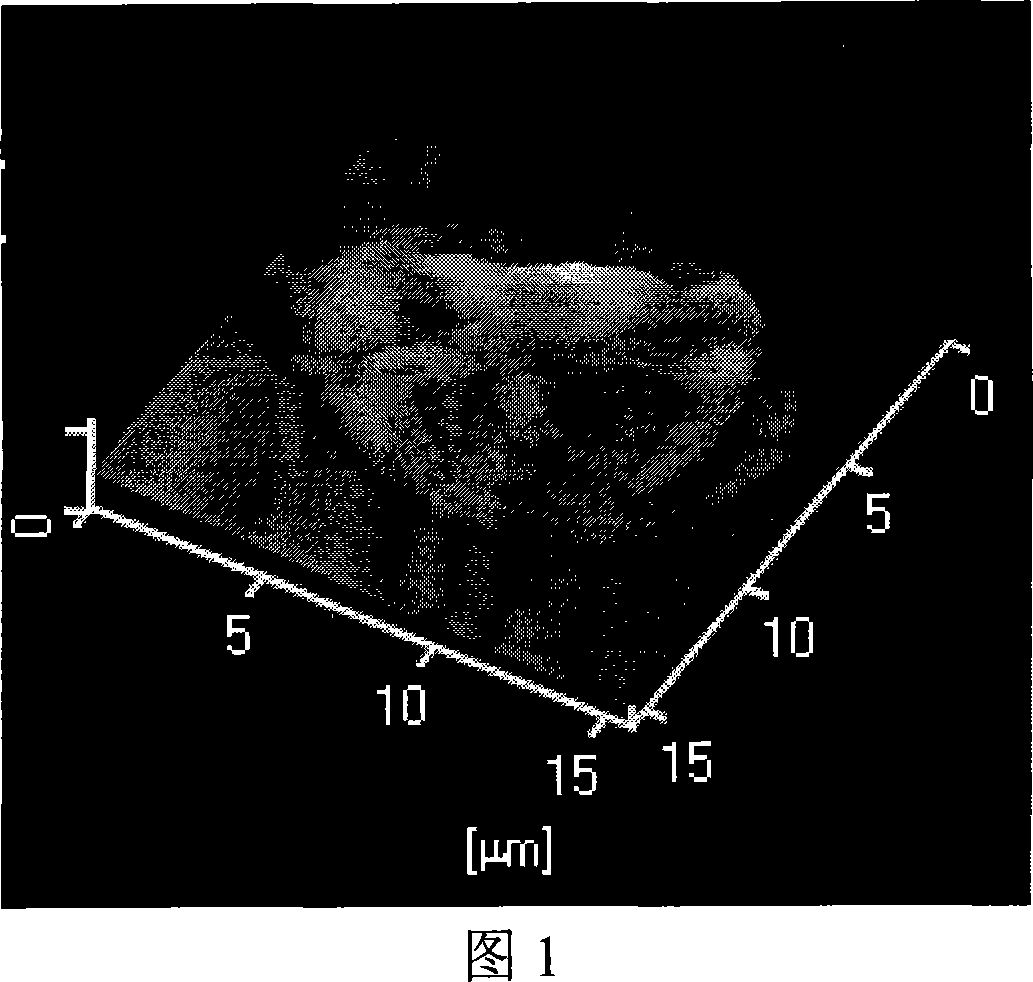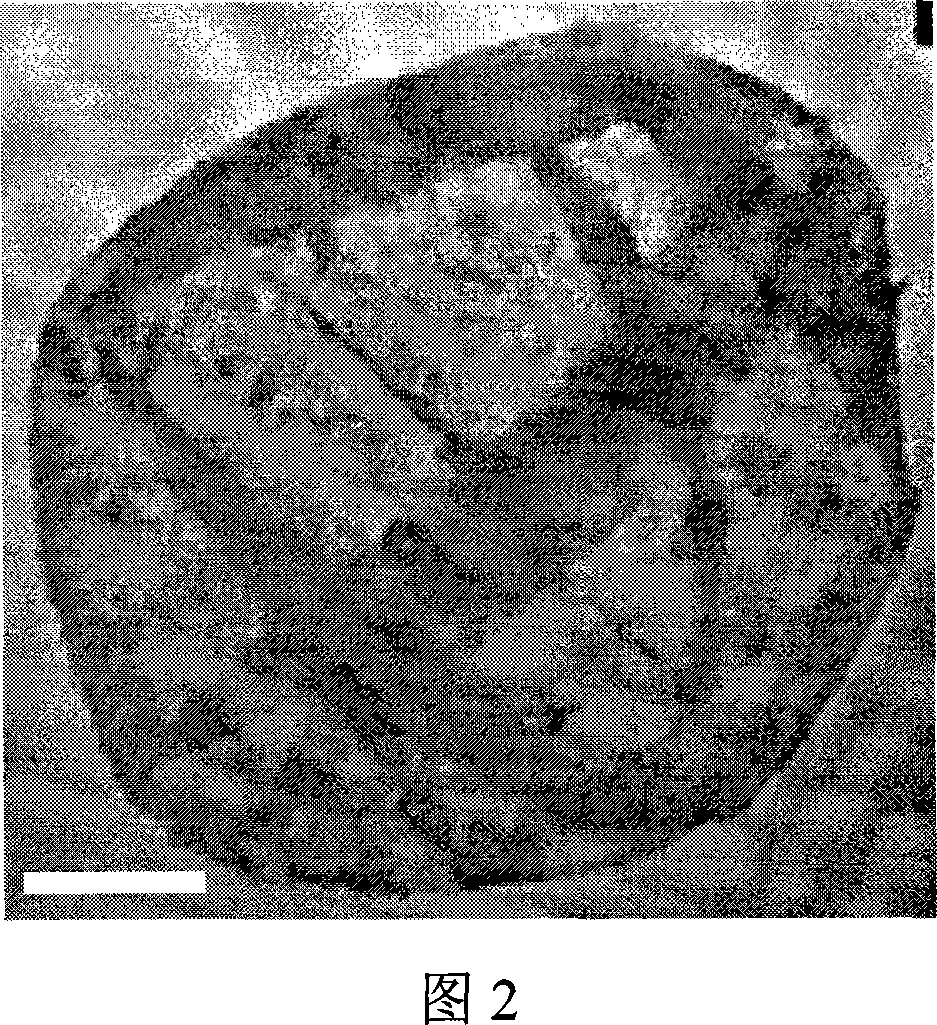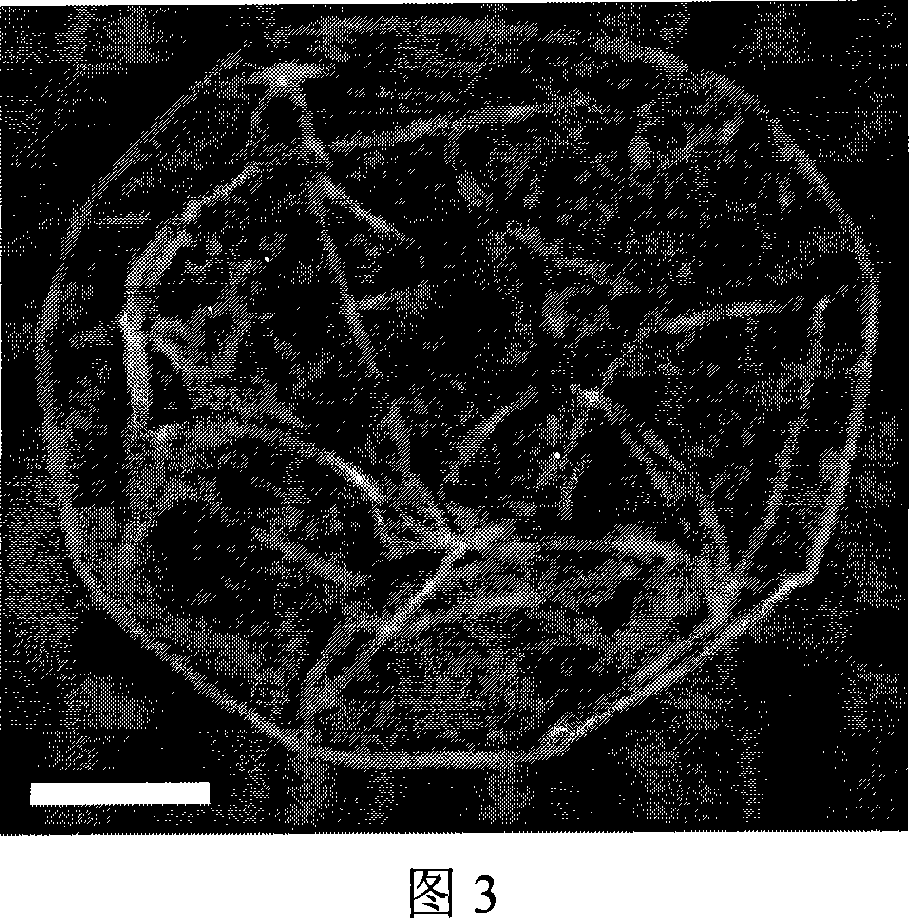Method for preparing layer-layer assembled microcapsule based on host-guest interactions
A microcapsule, host-guest technology, applied in the field of preparation of polymer hollow microcapsules, can solve the problems of microcapsule stability influence, single action force, microcapsule response diversification limit, etc., and achieve the effect of broad potential application value
- Summary
- Abstract
- Description
- Claims
- Application Information
AI Technical Summary
Problems solved by technology
Method used
Image
Examples
Embodiment 1
[0030] 1) Place the calcium carbonate particles in a 1.5 mL centrifuge tube, wash with water three times, add 1 mL of an aqueous solution of polyallylamine grafted β-cyclodextrin with a concentration of 5 mg / mL, and vibrate the centrifuge tube ultrasonically. After 10 minutes, centrifuge and wash with water 3 times to remove excess polyallylamine grafted β-cyclodextrin, thereby adsorbing a layer of polyallylamine grafted β-cyclodextrin on the surface of calcium carbonate particles .
[0031] 2) Disperse the calcium carbonate particles adsorbed with a layer of polyallylamine-grafted β-cyclodextrin obtained in step 1) in ethanol, and add 1 mL of polyallylamine-grafted ferrocene with a concentration of 5 mg / mL methanol solution, shake the centrifuge tube. After 10 minutes, it was centrifuged and washed three times with ethanol to remove excess polyallylamine-grafted ferrocene to obtain a polymer film based on the host-guest interaction between β-cyclodextrin and ferrocene.
[0...
Embodiment 2
[0034] 1) Place calcium carbonate particles in a 1.5 mL centrifuge tube, wash with water three times, add 1 mL of an aqueous solution of polyallylamine grafted β-cyclodextrin with a concentration of 10 mg / mL, and shake the centrifuge tube. After 5 minutes, centrifuge and wash with water for 3 times to remove excess polyallylamine grafted β-cyclodextrin, thereby adsorbing a layer of polyallylamine grafted β-cyclodextrin on the surface of calcium carbonate particles .
[0035] 2) Disperse the calcium carbonate particles adsorbed with a layer of polyallylamine-grafted β-cyclodextrin obtained in step 1) in ethanol, and add 1 mL of polyallylamine-grafted ferrocene with a concentration of 10 mg / mL methanol solution, shake the centrifuge tube. After 5 minutes, centrifuge and wash with ethanol three times to remove excess polyallylamine-grafted ferrocene, and obtain a polymer film based on the host-guest interaction between β-cyclodextrin and ferrocene.
[0036] 3) Repeat steps 1) a...
Embodiment 3
[0038]1) Place calcium carbonate particles in a 1.5 mL centrifuge tube, wash with water three times, add 1 mL of an aqueous solution of polyallylamine grafted β-cyclodextrin with a concentration of 1 mg / mL, and shake the centrifuge tube. After 30 minutes, centrifuge and wash with water 3 times to remove excess polyallylamine grafted β-cyclodextrin, thereby adsorbing a layer of polyallylamine grafted β-cyclodextrin on the surface of calcium carbonate particles .
[0039] 2) Disperse the calcium carbonate particles adsorbed with a layer of polyallylamine-grafted β-cyclodextrin obtained in step 1) in ethanol, and add 1 mL of polyallylamine-grafted ferrocene with a concentration of 1 mg / mL methanol solution, shake the centrifuge tube. After 30 minutes, it was centrifuged and washed three times with ethanol to remove excess polyallylamine-grafted ferrocene to obtain a polymer film based on the host-guest interaction between β-cyclodextrin and ferrocene.
[0040] 3) Repeat steps 1...
PUM
 Login to View More
Login to View More Abstract
Description
Claims
Application Information
 Login to View More
Login to View More - R&D
- Intellectual Property
- Life Sciences
- Materials
- Tech Scout
- Unparalleled Data Quality
- Higher Quality Content
- 60% Fewer Hallucinations
Browse by: Latest US Patents, China's latest patents, Technical Efficacy Thesaurus, Application Domain, Technology Topic, Popular Technical Reports.
© 2025 PatSnap. All rights reserved.Legal|Privacy policy|Modern Slavery Act Transparency Statement|Sitemap|About US| Contact US: help@patsnap.com



